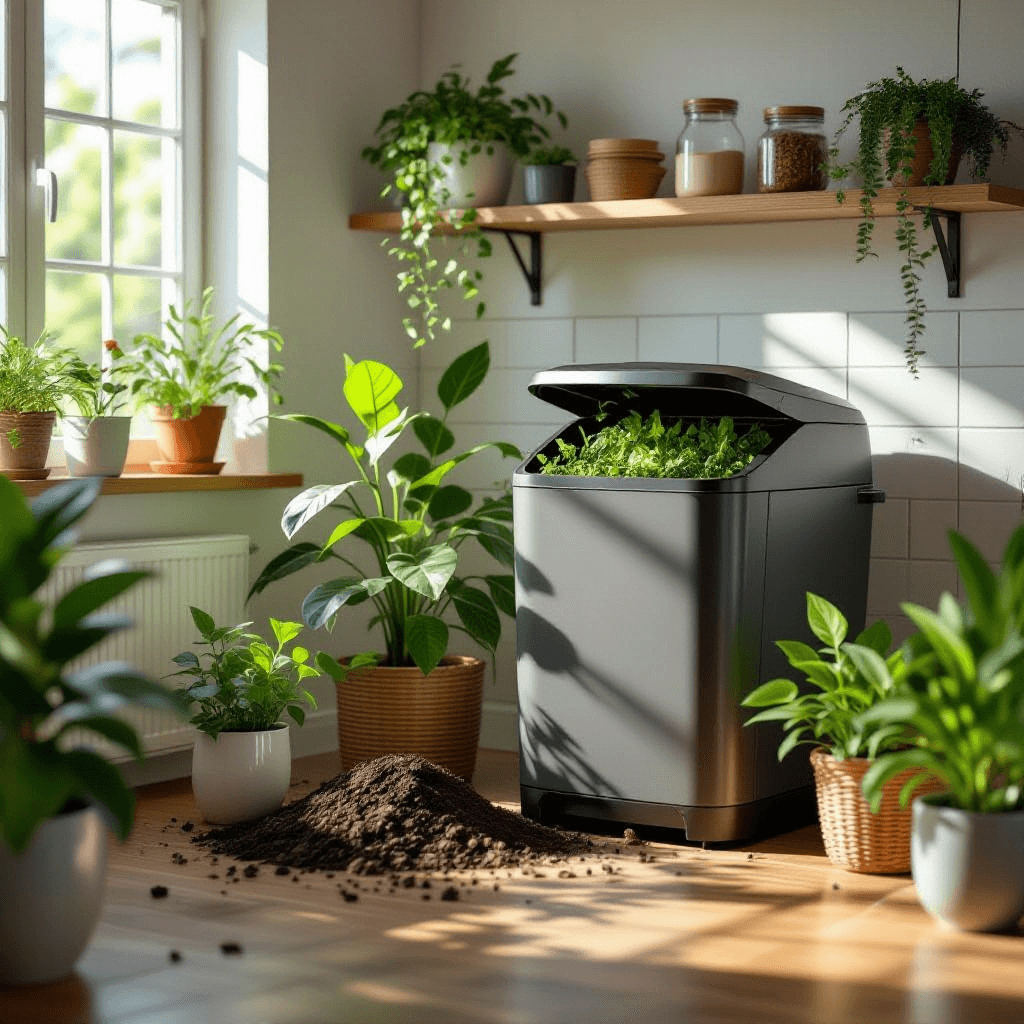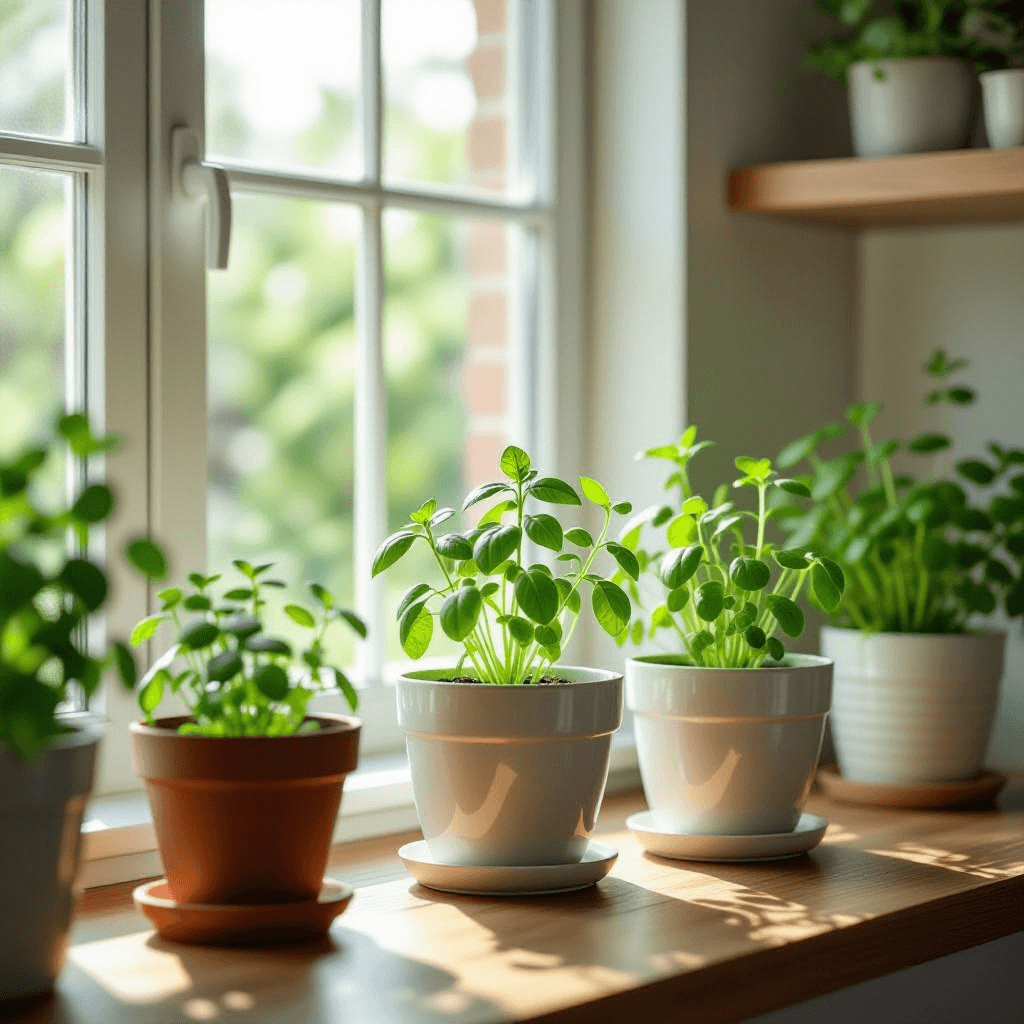Understanding Indoor Composting
Indoor composting refers to the process of recycling organic waste, specifically food scraps, into nutrient-rich compost within the confines of a home. This sustainable practice has gained traction, especially in urban environments like the UK, where space is often limited and the need for waste management solutions is pressing. As cities grapple with increasing amounts of waste, indoor composting emerges as a practical and environmentally friendly alternative.
The importance of indoor composting lies in its capacity to divert food waste from landfills. In the UK, a significant proportion of waste generated is organic, leading to challenges such as methane emissions when decomposed in landfills. By composting at home, individuals can minimize their carbon footprint while also contributing to a healthier ecosystem. The resulting compost is a valuable resource, enriching the soil of houseplants and supporting sustainable gardening practices.
Moreover, indoor composting offers various benefits beyond waste reduction. It fosters a connection with nature, promotes environmental awareness, and allows individuals to take an active role in their ecological impact. This practice can be easily adapted to various living situations, including apartments and small homes, utilizing systems such as worm bins or bokashi composting that are specifically designed for indoor use.
Despite its advantages, there are several misconceptions surrounding indoor composting. Many believe that composting indoors is cumbersome and encourages unpleasant odors; however, with the proper technique and care, these concerns can be effectively addressed. Choosing the right composting method and maintaining an appropriate balance of browns and greens can result in a virtually odor-free experience. Thus, indoor composting represents a feasible and accessible opportunity for everyone, regardless of space constraints or experience level.
Essential Materials and Tools for Indoor Composting
Indoor composting can be an efficient way to recycle food waste while nurturing houseplants. To initiate this sustainable practice, having the right materials and tools is essential. Several types of composters are available, each catering to different needs and living spaces. Popular options include bokashi bins, worm composters, and traditional compost bins.
Bokashi bins operate on a fermentation process, utilizing microorganisms to break down food waste. They are ideal for indoor use as they can handle a wide range of food scraps, including meat and dairy, that are often unsuitable for other composters. Worm composters, also known as vermicomposters, rely on red worms to consume organic waste, converting it into nutrient-rich worm castings. This method is highly effective for indoor settings and contributes to minimal odors if maintained properly. Traditional compost bins can also be used indoors, but they typically require more space and proper ventilation to manage odors and pests effectively.
When selecting the right composter, consider your available space and the amount of food waste you generate. For smaller apartments, a bokashi bin or a compact worm compost bin may be the most suitable options. Meanwhile, traditional compost bins are better suited for larger indoor areas or if you have access to an outdoor area. It is also beneficial to know which food scraps work best for indoor composting. Fruit and vegetable scraps, coffee grounds, eggshells, and dry leaves are excellent choices, while oils, meat, and dairy may attract unwanted pests.
Lastly, managing odors and pests is crucial for successful indoor composting. Regularly turning your compost and ensuring proper aeration will help mitigate smells. Additionally, covering scraps with dry materials such as shredded paper or leaves can minimize odor and deter pests. Ensuring proper selection of materials and tools is key to developing a productive indoor composting routine.
Step-by-Step Guide to Starting Indoor Composting
Beginning your indoor composting journey can seem daunting, but by following a series of straightforward steps, you can turn food waste into valuable nutrient-rich soil for your houseplants. The first step is to select an appropriate composting system. Options include traditional compost bins, worm composting (vermicomposting), and countertop compost containers. Each choice has its benefits, and the right one will depend on your space, budget, and personal preference.
Once you have your composting system in place, the next task is to gather your materials. Indoor composting requires a balance of ‘green’ materials, such as fruit and vegetable scraps, and ‘brown’ materials, like dried leaves, cardboard, or shredded paper. The ratio of greens to browns should ideally be around 2:1. This balance is crucial for effective decomposition and will help to prevent unpleasant odors and pests.
Adding food waste is straightforward; however, it is important to avoid certain items such as meat, dairy, and oily foods, as these can attract pests and create odors. Regularly layer your green and brown materials to maintain the right environment for composting. Moisten the compost as necessary, but ensure it is not soggy, as this can hinder the process.
Maintaining your compost is next; this involves periodically turning the materials to introduce oxygen, which accelerates decomposition. Monitor the compost for moisture levels and odor. A well-maintained compost should yield an earthy smell. In case of foul odors, it may indicate excess moisture or an imbalance of materials, which can be remedied by adding more browns or aerating the mix. Troubleshooting these common issues will make your indoor composting experience smoother and more enjoyable.
Engaging in indoor composting not only reduces waste but also fosters an environmentally friendly habit that benefits your plants and living space. With these steps, you are well on your way to creating a thriving compost system indoors.
Utilizing Your Compost: Creating Nutrient-Rich Soil for Houseplants
Utilizing your finished compost is an excellent way to enrich the soil for your houseplants, enhancing their health and promoting robust growth. Compost provides essential nutrients, improves soil structure, and creates a thriving environment for beneficial microorganisms. When you incorporate this organic material into your potting mix, you can significantly boost the quality of the soil, ensuring your plants receive the nourishment they need.
To effectively use your compost, a common practice is to mix it with potting soil. A recommended ratio is one part compost to three parts potting soil, but adjustments can be made based on the nutrient requirements of specific plants. Before mixing, ensure that the compost is fully decomposed to prevent any adverse effects on your plant’s roots or growth. Homemade compost’s richness can support a wide variety of houseplants, from pothos to ferns, making it a versatile addition to your plant care routine.
While compost can greatly enhance nutrient availability, caution is required to avoid over-fertilization. Over-application can lead to nutrient burn, which can damage your plants. It is advisable to introduce compost gradually, starting with small amounts and monitoring the plants’ responses. Furthermore, consider the timing for adding compost. Spring, when plants are actively growing, is often considered ideal for compost application, as plants can readily utilize the nutrients during this vigorous growth phase.
When using compost, it is also important to pay attention to the types of houseplants that benefit most from it. Leafy greens, flowering plants, and other robust species typically thrive on the enriched soil provided by homemade compost. Ultimately, integrating compost into your plant care routine can foster healthier, more vibrant plants and contribute positively to your indoor garden’s overall aesthetics and vitality.


